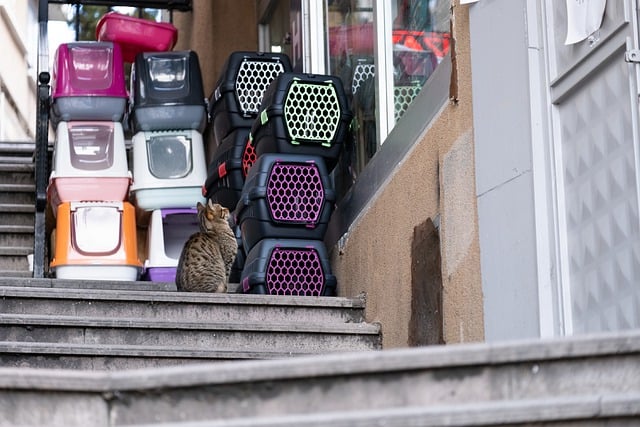In today's digital age, online platforms offer diverse, convenient, and secure payment options for cat sitters, including direct bank transfers, credit cards, digital wallets, and peer-to-peer systems. Websites like Rover, PetSitter.com, and Care.com allow owners to find local cat sitters based on location, availability, and pricing. While each payment method has its pros and cons, all ensure transparency through clear records, helping cat sitters optimize earnings and clients maintain secure transactions. Best practices include using encrypted gateways, verifying legitimacy, keeping records, and ensuring clear communication for a mutually beneficial pet-sitting experience.
“Unsure about how to compensate your cat sitter fairly? In today’s digital age, understanding online pet sitting payment options is essential. This comprehensive guide explores various methods available for cat sitters, from popular platforms tailored for feline care to a breakdown of each payment approach’s advantages and drawbacks.
We’ll navigate the best practices for secure transactions, ensuring peace of mind for both pet owners and cat sitters. Whether you’re a sitter seeking streamlined payments or an owner looking to manage services efficiently, this article offers valuable insights into the world of online cat sitter compensation.”
- Understanding Pet Sitter Payment Options Online
- Popular Platforms for Cat Sitters: An Overview
- Pros and Cons of Each Payment Method
- Best Practices for Secure Online Transactions
Understanding Pet Sitter Payment Options Online
When it comes to finding a pet sitter, one of the first things to consider is how they are paid. Thankfully, with the rise of online platforms, there are now numerous pet sitter payment options available to both owners and caretakers. These digital solutions offer convenience, transparency, and often include features like secure payments, scheduling tools, and even insurance.
Online platforms cater to all types of pet owners, from those requiring occasional cat sitting to full-time dog walkers. Whether you’re booking a sitter through a specialized app or website, payment processes have become more diverse and accessible. This includes direct bank transfers, credit card payments, digital wallets, and even peer-to-peer payment systems. These options not only make transacting easier but also help ensure that both parties are protected, with clear records of transactions readily available.
Popular Platforms for Cat Sitters: An Overview
In today’s digital age, many pet owners are turning to online platforms for convenient and reliable cat sitting services. Popular platforms like Rover, PetSitter.com, and Care.com have made it easier than ever to connect with trusted cat sitters. These websites offer a user-friendly interface where owners can search for sitters based on their location, availability, and pricing. Sitters, on the other hand, can create profiles highlighting their experience, services offered, and rates, making it a win-win situation.
Rover, in particular, is renowned for its robust community of pet professionals, including cat sitters who provide in-home visits and care. PetSitter.com offers a similar experience with detailed listings that allow owners to make informed decisions. Care.com further streamlines the process by offering not just cat sitting but also dog walking and grooming services, catering to a broader range of pet owner needs. These platforms ensure transparency in pricing through sitters’ listed rates or per-visit fees, making it convenient for both parties to agree on terms.
Pros and Cons of Each Payment Method
When it comes to payment for cat sitting services, online platforms offer a range of options that cater to both pet owners and cat sitters alike. Each method has its advantages and disadvantages, so understanding these can help cat sitters maximize their earnings and ensure a smooth transaction process.
For instance, direct bank transfers are a popular choice due to their security and transparency. Pet owners can easily transfer funds directly into the cat sitter’s account, providing a clear record of payment. However, this method may not offer the same level of convenience as other options, as it requires both parties to have compatible banking systems and can take a few days to process. On the other hand, digital wallets and payment apps provide speed and ease of use, allowing for instant transactions. Popular choices like PayPal or Venmo are widely accepted and often preferred by younger generations, but they may come with fees, which could reduce the cat sitter’s earnings slightly. Additionally, some pet owners might prefer not to share their financial details online for security concerns. Credit cards offer a balance between convenience and security, but they typically incur transaction fees that can be passed on to the client.
Best Practices for Secure Online Transactions
When considering online transactions for pet sitting services, both cat sitters and clients should adhere to best practices for security. Firstly, look for secure payment gateways that use encrypted technology to protect sensitive data like credit card information. Reputable cat sitting platforms typically offer this feature, ensuring that funds are transferred safely between the two parties. Additionally, it’s wise to avoid sharing personal or financial details unless absolutely necessary and only through verified and trusted channels.
Another crucial practice is verifying the legitimacy of the platform and the cat sitter. Check online reviews, cross-reference contact information, and ensure any platform has clear terms and conditions regarding payment protection. For clients, keeping records of transactions and communication is essential for dispute resolution if needed. Following these guidelines can help maintain a secure environment for both pet owners and cat sitters when conducting online payments.






